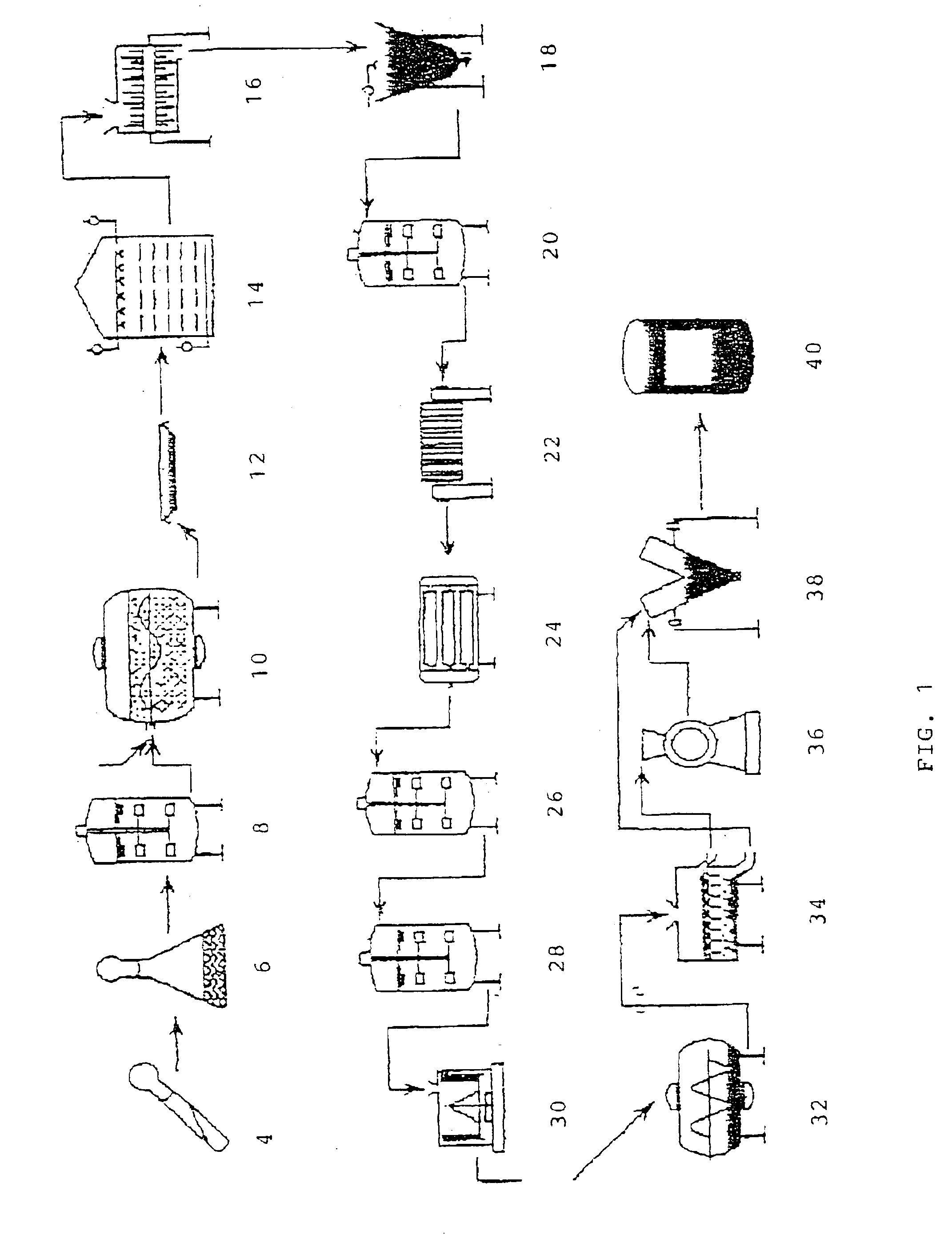Compositions and methods relating to reduction of symptoms of autism
- Summary
- Abstract
- Description
- Claims
- Application Information
AI Technical Summary
Benefits of technology
Problems solved by technology
Method used
Image
Examples
example 1
Production of Exorphinase from a Fungus
[0056]As depicted in FIG. 1, an exorphinase was produced by first growing a desired microbe in a tube to provide a tube culture which was then expanded to a flask culture in a flask 6. The culture was then further expanded in a seed tank 8 and then introduced into a rotating cooker 10 containing wheat bran and water. The inoculate was then grown from two to ten days until a desired level of growth was attained, and then the inoculated wheat bran 12 was removed from the rotating cooker 10 and transferred to a cultivation chamber 14, which cultivation chamber was provided with water, steam and filtered air as desired.
[0057]The resulting cultured bran was then transmitted through a crusher 16 and then placed into an extractor 18 where it was extracted with water. The extract was placed into a first precipitation tank 20 comprising diatomaceous earth and ethanol, and the resulting solution was then transmitted through a filter press 22 where the re...
example 2
Exorphin Inhibitor Composition
[0058]An exorphin-inhibiting composition was created comprising casomorphinase (having DPP IV activity) and gluteomorphinase, and having the following components.
[0059]Peptidase FPII, having an activity of 25,000 HUT (hemoglobin units of tyrosine; National Enzyme Company, Forsythe, Mo., USA 65653, and from Valley Research, Inc., South Bend, Ind., USA 46624 as Validase®FP) and comprising casomorphinase (having DPP IV activity). It was produced by a controlled surface fermentation of Aspergillus oryzae on a wheat bran koji culture, followed by extraction with water and then further purification. The peptidase FPII fraction was a white tan, free flowing powder with no offensive odor, had a protease activity of pH 7.0 of NLT 110,000 units / g, a peptidase activity of pH 5.0 of NLT 6,500 units / g, a drying loss of NMT 10%, a condition loss of NMT 10%, heavy metals of NMT 50 PPM, arsenic of NMT 2 PPM, a total plate count of NMT 1,000 / g, and was negative for coli...
example 3
Administration of Exorphin-Inhibiting Composition to Human Autism Patients
[0065]The composition of Example 2 was formulated into number 1-size gelatin capsules containing 360 mg of active ingredients plus a rice bran base. The formulation contained no gluten, casein, soy, corn, sugars, flavors, fragrances, preservatives, salicylates, maltodextrin, artificial colors, or other common allergenic substances. One capsule was taken at the beginning of each meal. If the capsules could not be swallowed they could be opened (pulled apart), and the contents added to the first several spoonfuls of food of each meal. The enzyme was not added to all the food or to portions that would not be eaten immediately.
[0066]Capsules were taken at the beginning of all meals and snacks (other than drinks: water, juice, colas, etc.). Continual snacking was discouraged as it places a continual demand on the production of digestive enzymes. If the individual forgot to take the capsule at the beginning of a mea...
PUM
| Property | Measurement | Unit |
|---|---|---|
| Fraction | aaaaa | aaaaa |
| Fraction | aaaaa | aaaaa |
| Fraction | aaaaa | aaaaa |
Abstract
Description
Claims
Application Information
 Login to View More
Login to View More - R&D
- Intellectual Property
- Life Sciences
- Materials
- Tech Scout
- Unparalleled Data Quality
- Higher Quality Content
- 60% Fewer Hallucinations
Browse by: Latest US Patents, China's latest patents, Technical Efficacy Thesaurus, Application Domain, Technology Topic, Popular Technical Reports.
© 2025 PatSnap. All rights reserved.Legal|Privacy policy|Modern Slavery Act Transparency Statement|Sitemap|About US| Contact US: help@patsnap.com

